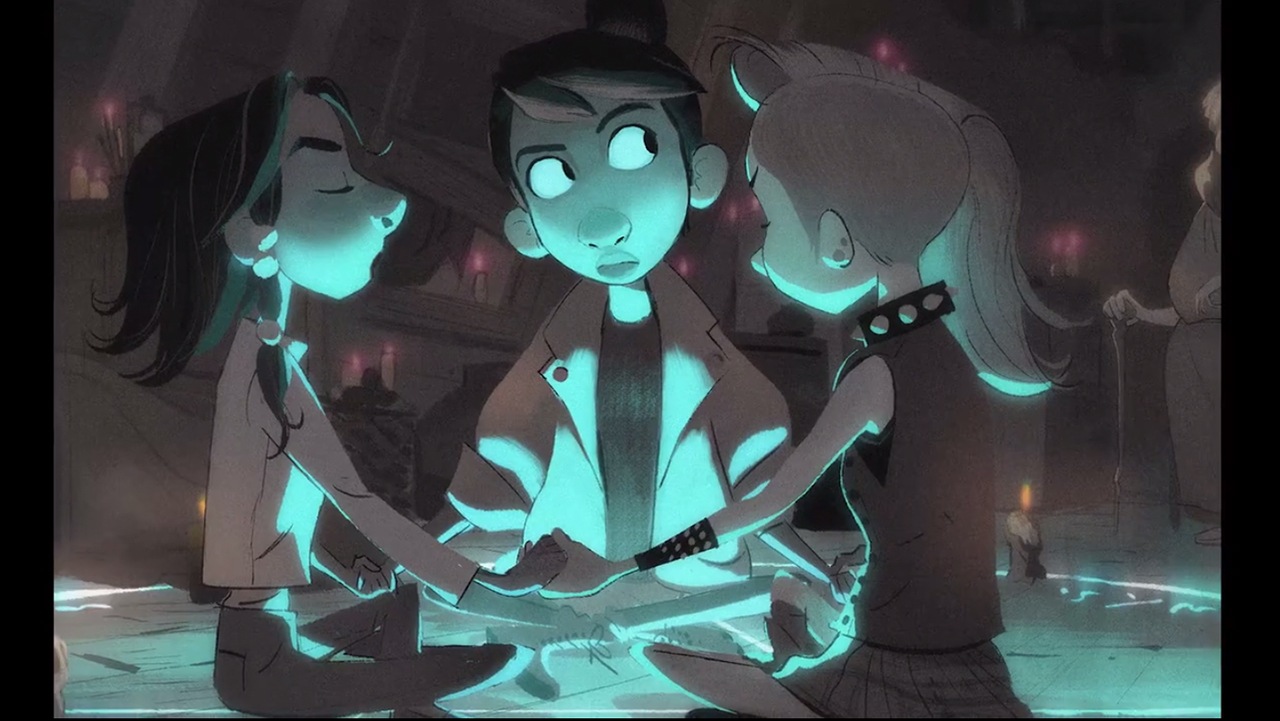As a runaway orphan with magical powers, Lucy is not a typical teenager. And when she meets MOJO, a 7-foot-tall enchanted statue of cement, she embarks on a dangerous quest to determine the source of MOJO’s powers and to reunite her with her own father — all while evading a group of shadowy figures who want to take claim of the statue for their own. The duo makes up the central figures in The Book of MOJO, a webcomic that has been a labor of love by veterans of Pixar, Disney and Dreamworks studios.
While The Book of MOJO is, at core, a compelling story with stunning visuals, it’s also a film that seeks to address the lack of diversity in animated films. It was created by Everett Downing, an animator who has worked on films like Wall-E and Ratatouille. Downing, who is black, has two daughters with his wife — who is Thai — and noticed that girls who look like them rarely appear in the stories they hear and TV shows they watch. “Everyone knows it’s an issue, but it’s something that not a lot of people are eager to address,” he tells ANIMAL.
Downing hopes to turn the comic into an animated short — and eventually, perhaps, pitch it as a full-length feature or a series to a big studio. On June 1, he set up a second Indiegogo campaign seeking funding for the production of the 8-10 minute short. Downing talked to ANIMAL about the inspiration for MOJO, diversity in animated films, and what he’s learned from years of working with Hollywood’s top studios.
The Book of MOJO from Everett Downing on Vimeo.
What inspired you to create The Book of MOJO?
Mojo was an idea that I had kicking around in my head for awhile. I’m a huge fan of urban fantasy. I love the idea of magic in the modern world and how that would be received. I had this image of a huge statue with this glowing jewel in his chest knocking around my head. I would draw him and think, “Man! What’s this guy’s story?!”. After awhile my subconscious started answering the question for me. As I started writing the story Lucy was develop and the world started building itself.
You were frustrated by the lack of diversity in animated stories. Have you ever confronted industry insiders with this? What has the response been like?
It’s interesting. I’ve been very vocal with my friends and colleagues, but I don’t think I’ve ever stepped up to someone in a position of authority and said “Can we address this?” A couple years ago, it was something that I silently decided I wanted to make a priority (when my girls were born). Now I still find it’s like the elephant in the room. Everyone knows it’s an issue, but it’s something that not a lot of people are eager to address.
Why do you think there’s such a lack of on-screen diversity, when America is as diverse as it has ever been? What accounts for that gap?
I think there are several reasons for this. I think that films and TV shows featuring characters of color may be seen as less lucrative or lacking in mass appeal (although I feel we’ve seen a lot of evidence to the contrary). I also think it has much to do with who is in a position to make the decision on “what gets made.” People have a tendency to go with who or what they’re comfortable with. The general populace may be diverse, but how diverse are the groups that are making the decision of what gets on the air?
You’ve got a long list of credits to your name. Why did you open this campaign on IndieGogo instead of going through a more traditional, studio route?
I intentionally decided to go through crowd-funding initially because I really wanted to get my hands dirty and do some filmmaking without studio intervention. (This is something that my friend Emma Coats and I talk about frequently). On my first outing, I wanted hands on experience making film and I wanted a chance to make something that is 100 percent me. I want full creative control to make the decisions (good and bad) and I also wanted to do something that is very different. Under studio direction, you may not get a real chance to explore your sensibilities as an artist. I want to get a good whack at it before I dive into those deep studio waters.
What are the most valuable lessons you learned from studios like Pixar and Dream Works?
I’d say there are 3 things I’ve learned and these are things I’ve realized while reflecting on my career. 1) Professionalism is invaluable. What you put into the job is what you get back. 2) Be Present. Productions are experiences that you carry with you your entire life. Take time and connect with the work and your compatriots. 3) Be nice. I’m a solid animator and story artist, but I’ve gotten more jobs because I’m eager and easy to work with. Don’t underestimate the value of being a nice guy.
What will happen to the film if/when fully funded?
After it’s funded we’ll in on production. We all really excited to roll up our sleeves and get in there, start making this thing. We want to use the piece as a proof of concept, like a potential pilot that we can use pitch for a series or a feature film.
Our campaign is running from June 1st until July 1st. We’re asking for $40,000 to start building characters and environments, layout cameras and continue animation testing. If we make our goal early, it will open the possibility to fund animation production, music and sound recording, lighting and rendering and other post production. Come and check us out at www.igg.me/at/mojoshort.


